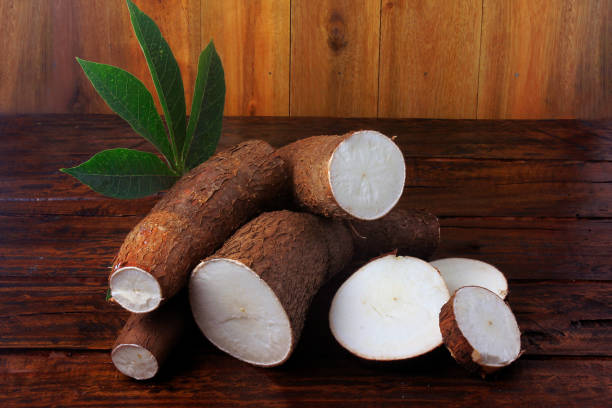Cassava farming has become one of the most promising agricultural ventures in Kenya, offering food security and income opportunities to thousands of farmers. The crop’s resilience to drought and adaptability to diverse soil types make it an ideal choice for both smallholder and commercial farming. However, despite cassava’s hardiness, achieving optimal yields requires proper management right from land preparation to post-harvest handling. This guide explores the best cassava farming practices in Kenya, focusing on practical, research-backed strategies for high productivity, profitability, and sustainability.
1. Site Selection and Land Preparation
Successful cassava production begins with choosing the right site. Cassava grows well in well-drained sandy loam soils with a pH of 5.5 to 7.0. Though it tolerates poor soils, fertile and well-managed land results in higher yields and better-quality roots. Avoid waterlogged areas, which often cause root rot and stunted growth.Before planting, conduct a soil test to assess nutrient status and determine the best fertilizer or organic input strategy. Land preparation steps include clearing the field of shrubs, weeds, and stumps, deep ploughing (about 30 cm) to loosen the soil, and ridging about 1 meter apart to improve drainage and ease harvesting.
2. Selecting the Right Varieties and Planting Materials
The choice of variety is crucial. Kenya’s research institutions such as KALRO and IITA have released improved cassava varieties resistant to major diseases like Cassava Mosaic Disease (CMD) and Cassava Brown Streak Disease (CBSD). Popular high-yielding varieties include KME 1, KME 2, and KME 61—known for disease resistance and good root quality—and MH95/0183 and MM96/5280, which are early maturing and suitable for both food and industrial processing.Always source clean planting materials (stem cuttings) from certified seed multipliers or reputable nurseries. Select stem cuttings that are 20–25 cm long, taken from mature, healthy plants (8–12 months old). Each cutting should have 5–8 nodes and be free of visible disease symptoms.
3. Planting and Field Establishment
Planting should coincide with the onset of rains, ensuring the soil has adequate moisture for sprouting. In areas with bimodal rainfall, farmers can stagger planting to spread production and manage market risks.Spacing: 1 meter × 1 meter for sole cropping or 1 meter × 1.2 meters when intercropped.
Planting method: Insert the cutting at a 45° angle or vertically, burying about two-thirds of the stem.
Planting depth: 10–15 cm for firm soil contact and quick root establishment.
Ridged planting supports healthy root expansion, especially in areas with heavy soils or inconsistent rainfall.
4. Soil Fertility and Nutrient Management
Cassava can survive on poor soils, but to maximize yields, balanced nutrition is essential. Apply fertilizers or organic matter based on soil test results. Organic manure or compost improves soil structure and moisture retention. Apply NPK (17:17:17) fertilizer at 200–300 kg per hectare during planting or one month after. In low fertility soils, supplement with potassium to enhance root bulking and starch content. Mulching helps conserve moisture, suppress weeds, and prevent erosion.5. Water Management and Irrigation
Cassava is drought-tolerant but performs best under consistent moisture. In regions experiencing erratic rainfall, consider water-saving irrigation methods such as drip irrigation, which minimizes water loss while maintaining uniform moisture. Employ rainwater harvesting and maintain mulch cover to reduce evaporation.6. Weed Control and Field Maintenance
Weed competition during the early stages (first 3–4 months) drastically reduces cassava yields. Effective weed management should therefore start immediately after planting. Manual weeding using hoes or mechanical weeders is recommended. Herbicides may be used cautiously. Intercropping cassava with legumes like groundnuts or beans helps reduce weed pressure and adds nitrogen to the soil.7. Pest and Disease Management
Cassava production in Kenya faces threats from CMD, CBSD, whiteflies, and cassava green mites. Integrated Pest and Disease Management (IPDM) involves using certified planting materials, resistant varieties, field sanitation, and crop rotation. Farmers should regularly scout for symptoms and take timely action. Biological control using natural predators and organic pest solutions like neem extracts can reduce chemical use.8. Harvesting and Post-Harvest Handling
Cassava reaches maturity 8–18 months after planting depending on variety and environmental conditions. Early-maturing varieties may be ready in 9 months. Harvest when leaves start yellowing and roots are firm and large. Avoid leaving mature roots in the soil too long to prevent fibrous texture. Handle roots carefully to prevent breakage. Clean and grade roots, cure them in shade for 2–3 days, and store in cool, dry places or process into chips, flour, or starch.9. Value Addition and Market Opportunities
Cassava’s market potential goes beyond consumption. Value addition boosts income and reduces post-harvest losses. Popular products include High Quality Cassava Flour (HQCF), cassava starch, animal feed, and bioethanol. Forming farmer cooperatives and joining contract farming programs with processors enhances access to markets and training.10. Regional Considerations
Western Kenya (Busia, Kakamega, Siaya): Favorable rainfall supports high yields but vigilance against CMD and CBSD is crucial.Coastal region: Drought-tolerant varieties and mulching are essential.
Rift Valley and Eastern Kenya: Irrigation, soil fertility improvement, and disease management are priorities.
11. Risk Management and Sustainability
Key risks in cassava production include disease outbreaks, market fluctuations, and climate change. Farmers can mitigate these by diversifying crops, adopting climate-smart agriculture, and engaging in collective marketing. Insurance and savings groups help protect against losses.12. Key Takeaways
– Choose well-drained soils and prepare the land through deep ploughing and ridging.– Use certified, disease-free planting materials and disease-resistant varieties.
– Maintain soil fertility through organic matter and balanced fertilizer use.
– Practice timely weeding, moisture conservation, and integrated pest management.
– Harvest at the right maturity and explore value addition to boost profitability.

